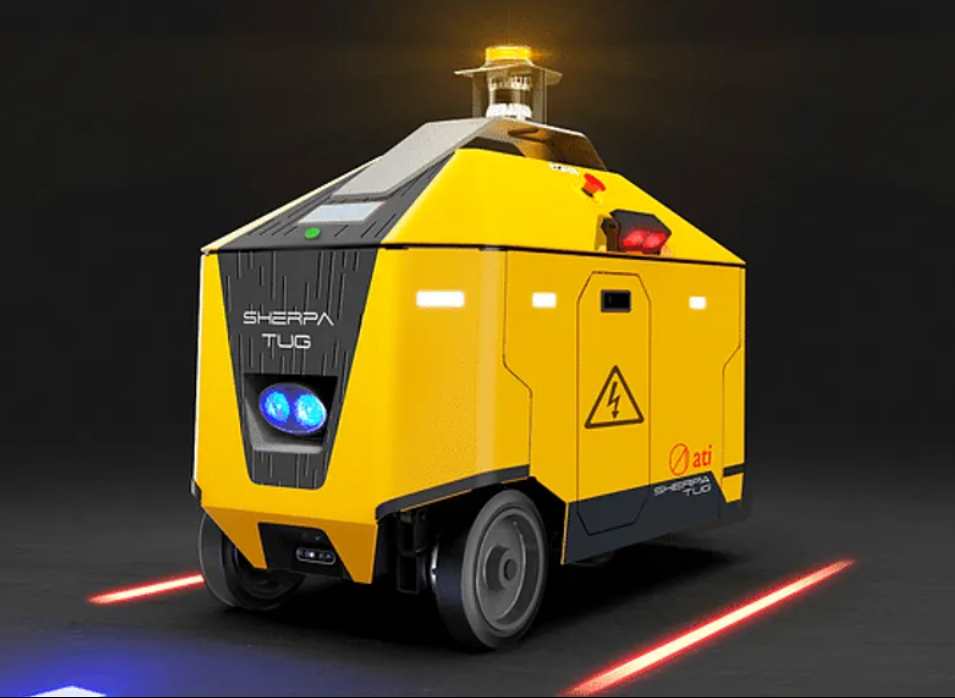Indian autonomous mobile robots (AMR) startup Ati Motors has successfully raised $20 million in funding, marking a significant step in its ambitious plan for global expansion. As the demand for automation in manufacturing and logistics grows, Ati Motors aims to capitalize on emerging opportunities in the U.S., India, and Southeast Asia, regions increasingly looking to reduce their reliance on Chinese imports. This investment underscores the startup’s potential to become a major player in the autonomous robotics sector, aligning with India’s broader vision of establishing itself as a global robotics leader by 2030.
The Growing Market for Autonomous Mobile Robots
The surge in demand for AMRs is driven by the need for increased efficiency, cost-effectiveness, and operational scalability in industries such as manufacturing, warehousing, and logistics. According to the International Federation of Robotics (IFR), India witnessed a 59% year-over-year (YoY) growth in industrial robotics installations in 2023, with a total of 8,500 units installed. Despite this impressive growth, India still trails behind global leaders such as China, Japan, and the U.S., where robotics adoption is far more widespread.
To address this gap, India’s government has introduced the National Strategy for Robotics, a policy framework proposed by the Indian IT Ministry to position the country as a robotics powerhouse by 2030. Ati Motors’ recent funding aligns potentially comparable with this national vision, providing the necessary financial backing to accelerate its R&D, scale production, and expand into international markets.
Ati Motors’ Technological Advancements and Products
Founded seven years ago, Ati Motors has made significant strides in the autonomous robotics sector. The company currently operates from its manufacturing and R&D facility in Bengaluru, a hub for India’s burgeoning tech industry. Over the years, the startup has developed seven distinct robotic solutions, two of which are currently in the testing phase and slated for commercial release in the coming months.
Ati Motors’ autonomous robots are designed to enhance productivity by automating tasks such as moving trolleys, bins, and pallets in manufacturing plants and warehouses. These robots are equipped with advanced navigation systems, sensors, and artificial intelligence capabilities that allow them to function in dynamic environments with minimal human intervention.
Competitive Edge: Aiming to Replace Manual Operations
Unlike traditional robotics companies that focus on competing with other robotic solutions, Ati Motors’ primary competitor is the status quo, according to founder and CEO Saurabh Chandra. The startup’s goal is to replace manual labor and human-operated vehicles with intelligent, autonomous systems that optimize workflows, reduce operational costs, and enhance workplace safety.
Chandra stated in a recent interview, “Typically, we are displacing manual operation or somebody driving a vehicle, or often somebody pushing it by hands.” This focus on automation as a replacement for manual processes highlights Ati Motors’ unique approach to market penetration and customer adoption.
Global Expansion Strategy
With its fresh $20 million funding, Ati Motors is strategically planning its global expansion, targeting markets where demand for robotics solutions is accelerating rapidly. Key focus areas include:
United States:
•Increasing domestic manufacturing and reshoring efforts present significant opportunities for automation in logistics and supply chain operations.
•Partnerships with logistics companies, third-party warehouse operators, and e-commerce giants will be crucial for market entry.
India:
•The domestic market is experiencing a boom in robotics adoption, driven by government incentives, private sector interest, and a growing emphasis on smart manufacturing practices.
•Local partnerships with industries such as automotive, pharmaceuticals, and retail could provide significant revenue streams.
Southeast Asia:
•Countries like Vietnam, Thailand, and Indonesia are emerging as manufacturing hubs, increasingly attracting companies looking to diversify their supply chains away from China.
•These markets offer favorable conditions for automation due to growing industrialization and a relatively lower robotics penetration rate.
Challenges and Opportunities
Despite its promising trajectory, Ati Motors faces several challenges that it must navigate to achieve long-term success:
Challenges:
•Competition from Established Global Players:
While Ati Motors aims to replace manual processes, established robotics companies such as Boston Dynamics, KUKA, and Fanuc pose indirect competition with their advanced AMR solutions.
•Scalability of Production:
Expanding production capabilities to meet international demand while maintaining cost efficiency and quality will be a critical challenge.
•Market Education:
Many potential customers still rely on traditional manual operations, and educating them on the benefits of automation will require dedicated efforts.
Opportunities:
•Government Support and Incentives:
With India’s push toward robotics leadership, Ati Motors stands to benefit from subsidies, grants, and tax incentives for robotics startups.
•E-commerce Boom:
The rapid growth of e-commerce and last-mile delivery services necessitates automation solutions that can improve logistics efficiency.
•Customization and Innovation:
Developing industry-specific robotic solutions could help Ati Motors cater to niche markets, creating a competitive advantage.
Final Thoughts
The $20 million funding round marks a pivotal moment for Ati Motors as it embarks on its global expansion journey. With a strong foothold in India and ambitions to penetrate international markets, the company is poised to play a crucial role in the evolving landscape of autonomous mobile robotics.
By focusing on replacing manual labor with intelligent automation, leveraging cutting-edge technology, and aligning with India’s national robotics strategy, Ati Motors is set to drive innovation and redefine the future of industrial automation on a global scale.
No comments yet.









